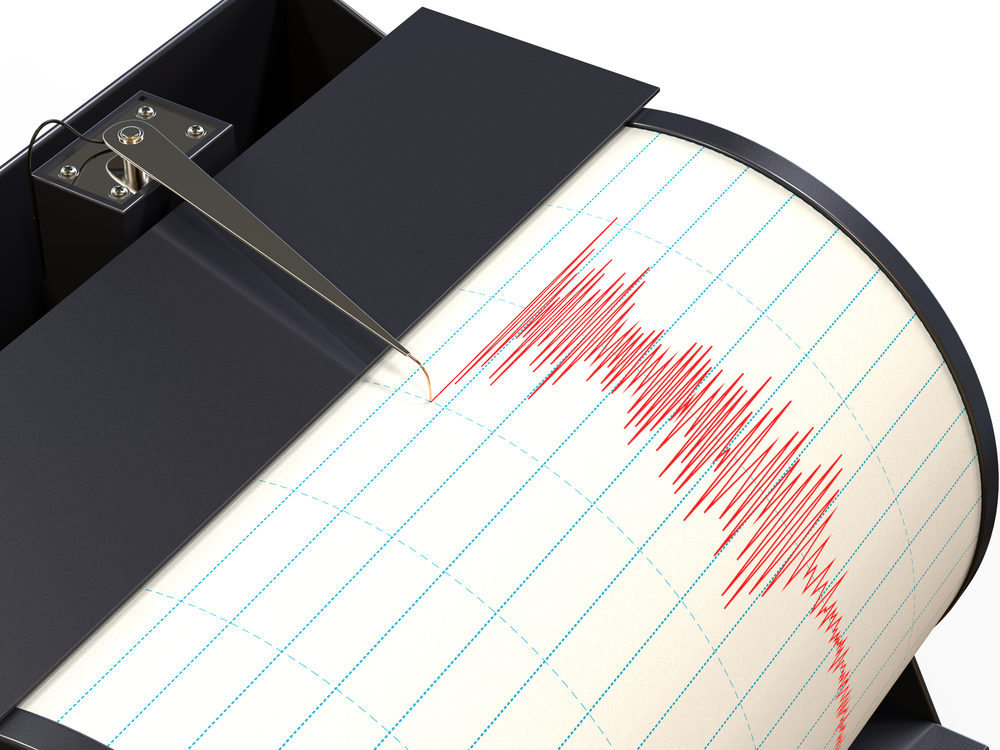Earthquakes Trigger Sierra Club Lawsuit Against Fracking Companies

The Sierra Club and Public Justice have filed a lawsuit against a number of oil and gas companies they accuse of contributing to earthquakes in Oklahoma and throughout the country, due to the use of injection wells related to hydraulic fracturing gas mining operations, more commonly known as “fracking”.
According to a Sierra Club press release issued on February 16, the complaint was filed on Tuesday in federal court in Oklahoma. It names Chesapeake Operating LLC., Devon Energy Production Co. and New Dominion LLC as defendants, indicating that their injection wells triggered earthquakes there and in Kansas.
The fracking lawsuit (PDF) comes after a 5.1 magnitude earthquake that shook central Oklahoma this weekend; the third strongest quake recorded in the state’s history.

Did You Know?
Millions of Philips CPAP Machines Recalled
Philips DreamStation, CPAP and BiPAP machines sold in recent years may pose a risk of cancer, lung damage and other injuries.
Learn MoreHydraulic fracturing is a controversial gas extraction process, where a mixture of water, sand and fluids that the gas industry has fought to keep secret is injected into the ground at extremely high pressure, cracking shale deposits and freeing trapped natural gas, which can then be removed. Those fluids are then sucked from the ground and often disposed of in wastewater wells.
As fracking operations have increased, researchers have noted a dramatic increase in the number of earthquakes in the central and eastern United States over the past few years, including Oklahoma.
“The dangers associated with fracking and its related processes has never been more clear than it is here in Oklahoma,” Johnson Bridgwater, Director of Sierra Club’s Oklahoma Chapter, said in the press release. “Oklahomans, just as all Americans do, deserve the right to live in peace and comfort – not to live in fear of man-made earthquakes. It is our hope that these three companies will recognize the immediate danger they are putting communities in, and put our health and our environment ahead of its profits.”
The lawsuit notes that the latest quake was one of a string of earthquakes that have shook the state since the beginning of the year.
“Oklahoma City residents were awakened on January 1 with a 4.1 magnitude earthquake” the lawsuit notes. “Six days later, 4.3 and 4.8 magnitude earthquakes occurred back-to-back.”
By January 16, the state had been hit by 131 earthquakes this year alone, ranging in magnitude from 2.01 to 4.8, the lawsuit indicates.
The lawsuit calls for substantial reduction in production waste and calls for the companies to reinforce vulnerable structures and for the establishment of an independent earthquake monitoring and prediction center.
The same day the complaint was filed, the Oklahoma Corporation Commission announced a new plan to address the quakes, calling for fracking operators to decrease wastewater injection by 500,000 barrels over the next two months.
Recent research has linked fracking wells to an unprecedented increase in powerful earthquakes across the South and Midwest. U.S. government geologists now say that Oklahoma suffers more earthquakes than California, due entirely to fracking and oil and gas wastewater disposal wells.
Last year, Oklahoma had 585 earthquakes with a magnitude of 3.0 or greater, which many link to fracking oil and gas extraction and wastewater injection wells used to get rid of fracking fluids.
Those shakes have included earthquakes exceeding 5.0 on the Richter Scale, which caused significant damage, according to a February 2015 report by the U.S. Geological Survey (USGS).
In January 2015, a report published in the Bulletin of the Seismological Society of America noted that 77 earthquakes were likely linked to fracking operations in the area around Poland Township, Ohio during just a week’s time in March 2014.
From 1967 to 2000, there were an average of 21 earthquakes per year above magnitude 3.0. However, from 2010 to 2012, as hydraulic fracturing took off, so did the number of earthquakes of magnitude 3.0 or higher, with an average of 100 per year, according to the USGS.
Fracking earthquakes not only happen miles away from the wells, threatening human life, but they may also threaten vital structures such as dams and nuclear power plants, scientists warn.
Fracking Chemical Health Concerns
Environmentalists, a number of lawmakers, local communities and consumer advocacy groups have also expressed concerns for years that hydrofracking presents a threat to groundwater supplies and the environment.
In June, the U.S. Environmental Protection Agency (EPA) confirmed that some hydraulic fracturing has resulted in polluted water supplies. However, the agency noted that the problem was not yet widespread. It also noted that it lacked sufficient evidence to truly understand how widespread the problem may be.
The state of New York decided to ban some hydraulic fracturing late last year, after a state study found questions and concerns regarding the safety of large-scale extraction wells.
Last year, a Texas jury awarded $2.9 million in damages to a family who sued a hydraulic fracturing company for being a public nuisance. According to allegations raised in a fracking lawsuit filed by the Parr family, nearly two dozen wells near their property caused a private nuisance, exposing them to toxic chemicals that damaged their health and lowered property value.
At least two lawsuits have been filed in Oklahoma against oil and gas operations there by residents who said they suffered property damages and personal injuries from previous fracking-related earthquakes.
Get more articles like this sent directly to your inbox.
"*" indicates required fields





0 Comments